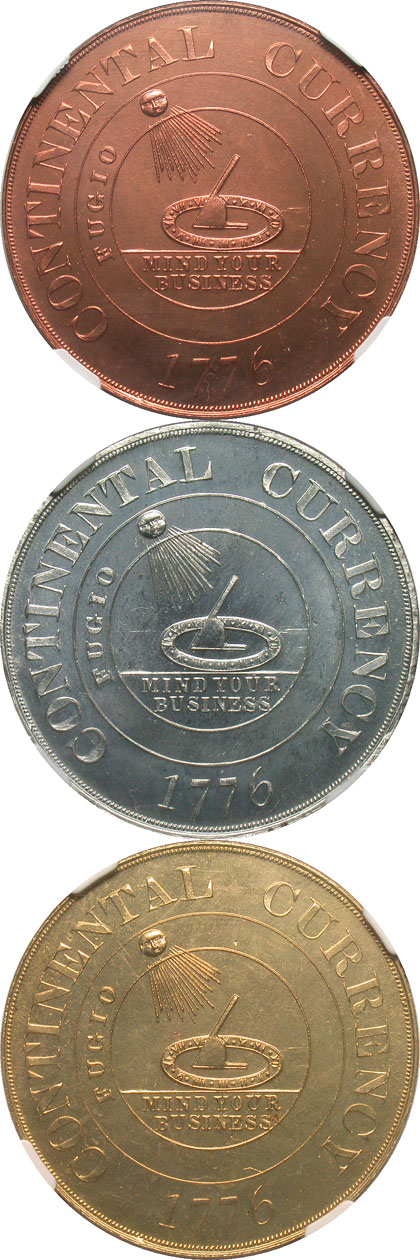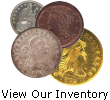We are starting a weekly post to our blog that we'll call Friday Trivia. If you think you know the answer, email us at info@northeastcoin.com. The first correct answer will receive a prize. We welcome and encourage everyone to participate. Good luck!
Here is this week's question:
What uncirculated date(s) of the Three Dollar Indian Princess is/are missing from the Smithsonian Collection?
Time for another Throw Back Thursday post. A local customer from long ago came into our offices recently and sold us some coins that he had purchased from us previously...in the early 80's! He brought with him an old brochure of ours. It's fun to look through and look at the pricing from back in the day.
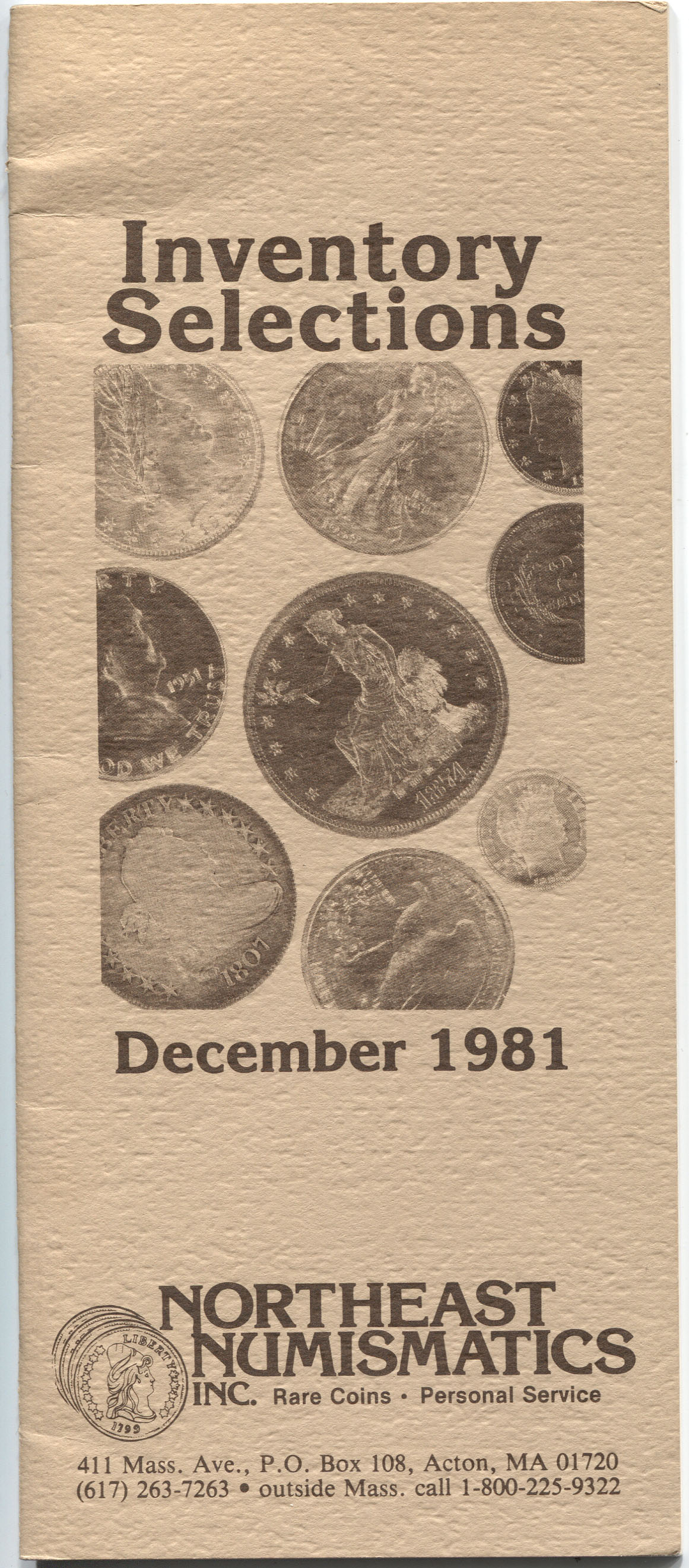
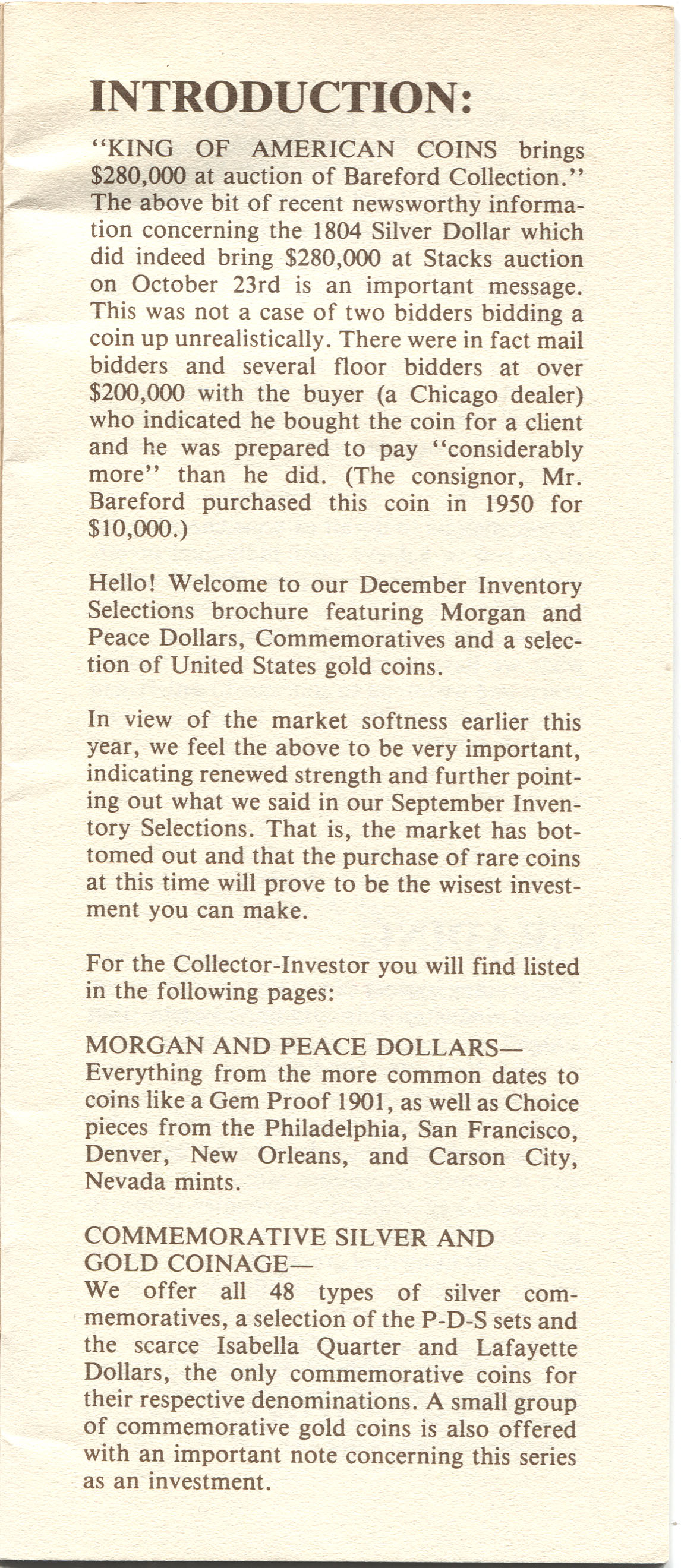
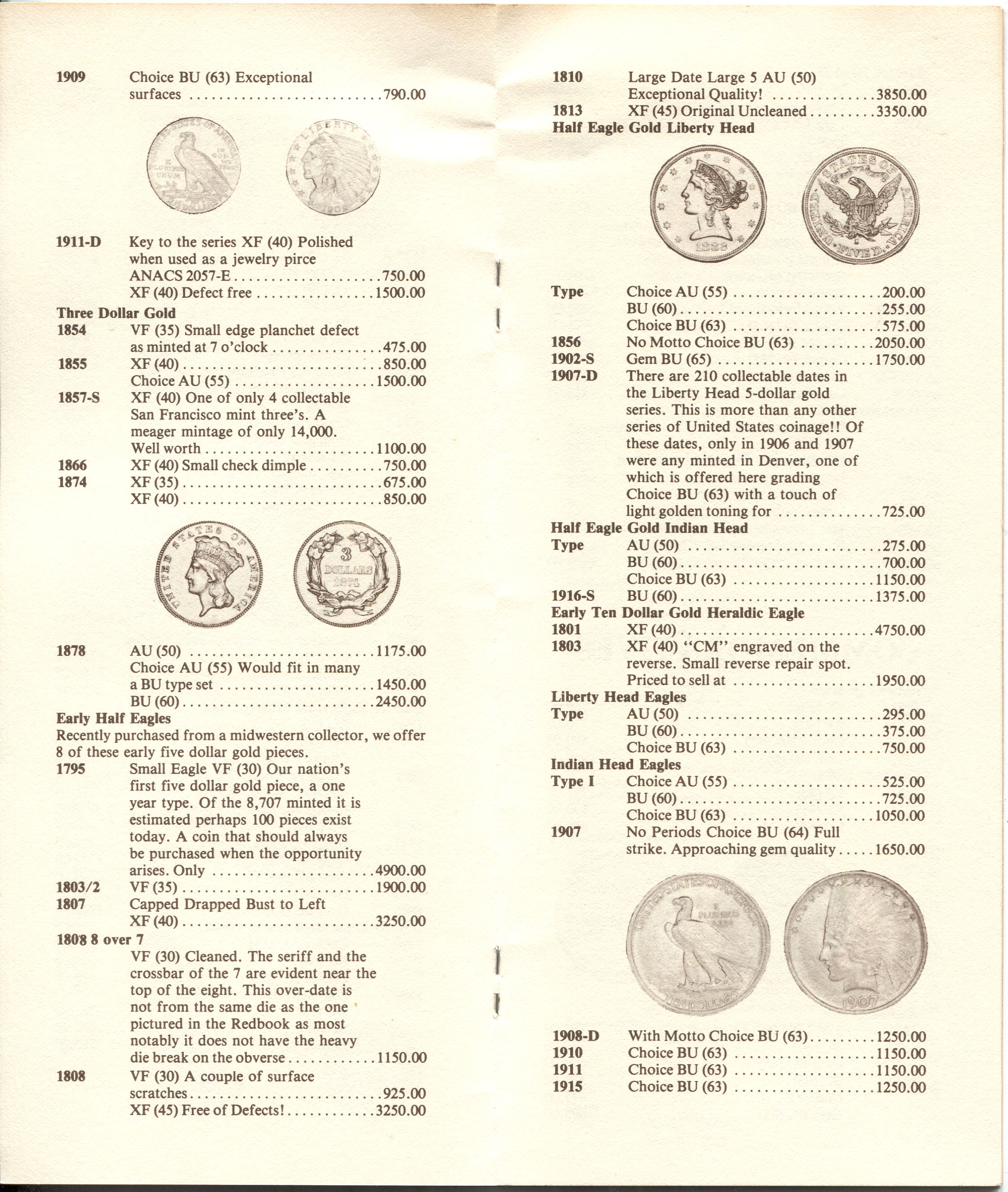
Have you ever been in a cemetery and saw coins laying on a tombstone? A coin left on a headstone lets the deceased soldier’s family know that somebody stopped by to pay their respect.
Leaving a penny means you visited. A nickel means that you and the deceased soldier trained at boot camp together. If you served with the soldier, you leave a dime. A quarter is very significant because it means that you were there when that soldier was killed.
So what happens to the coins after Memorial Day? They are collected and the money is used for cemetery maintenance, the cost of burial for soldiers, or the care for indigent soldiers.
In the US, this practice became common during the Vietnam war. Due to the political divide in the country over the war, leaving a coin was seen as a more practical way to communicate that you had visited the grave than contacting the soldier's family, which could devolve into an uncomfortable argument over politics relating to the war. In general, however, this tradition can be traced to as far back as the Roman Empire. It was a way to give a buddy some spending money for the hereafter.
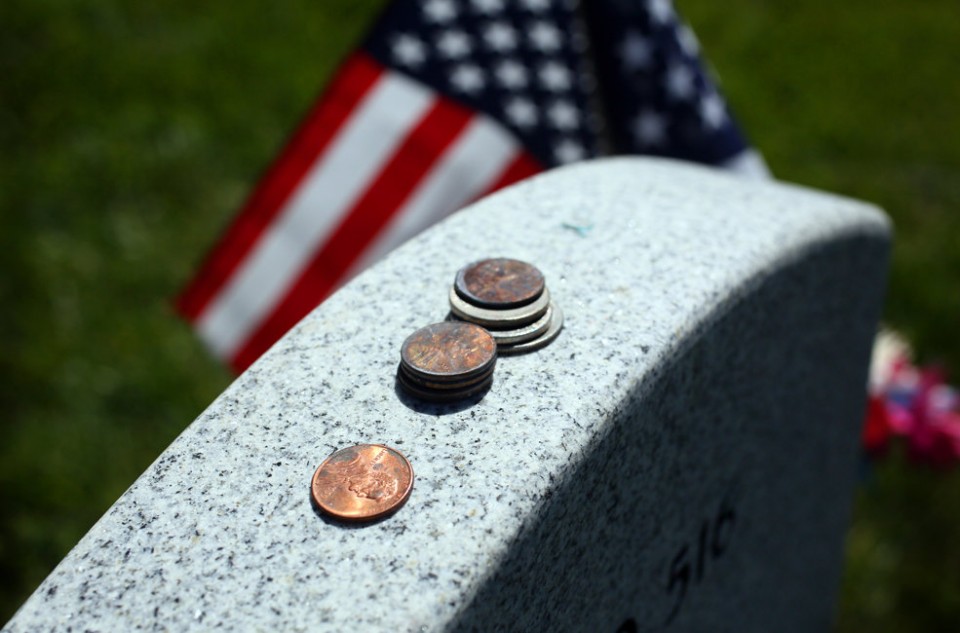
Or is there nothing wrong with it? We welcome your comments. Shoot an email to info@northeastcoin.com.
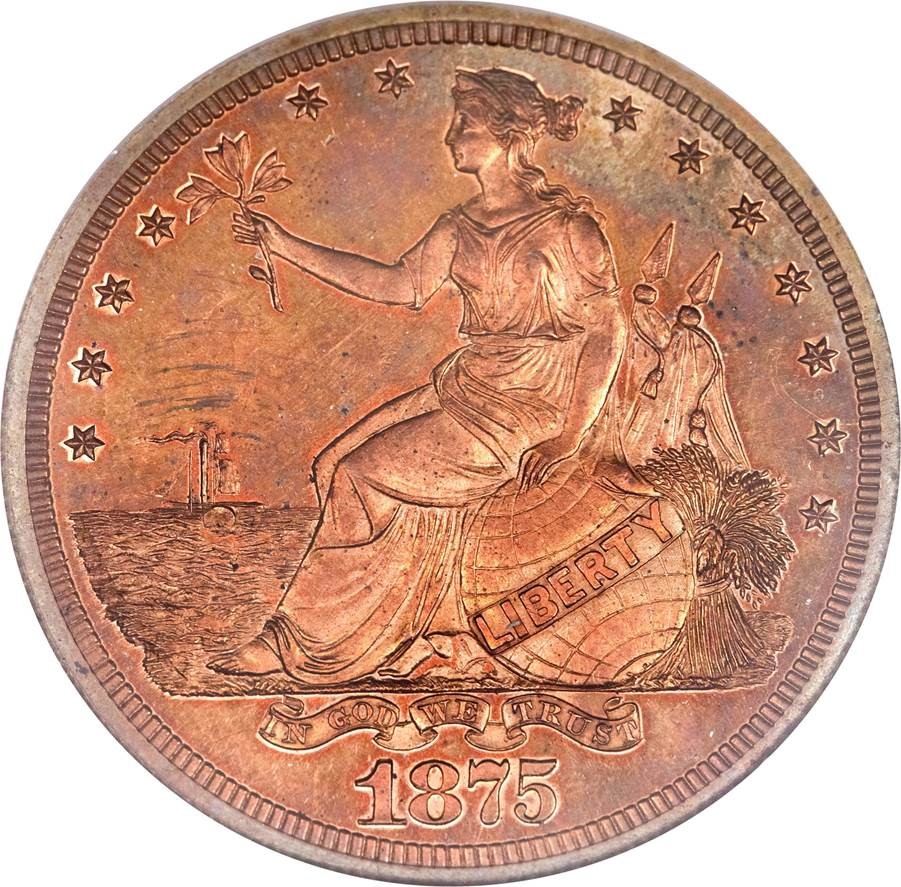
Goldine is a yellowish alloy of copper and zinc, sometimes including small amounts of other metals, but usually 67% copper and 33% zinc. We recently sold a continental dollar restrike in goldine. Hint: it’s the one on the bottom!
